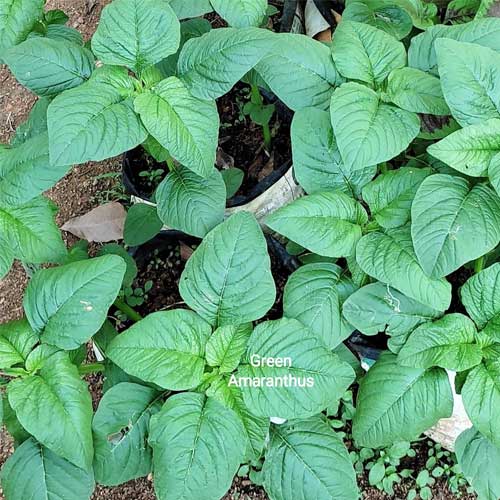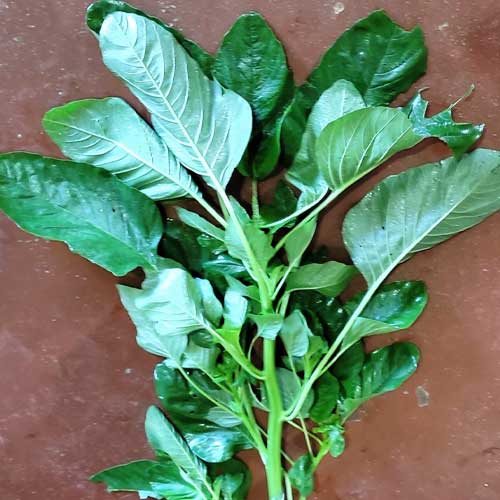Total Number of seeds: 1000
Amaranthus Green Katwa Seeds produce leafy greens with tender, light green leaves and sweet stems. This variety is known for its vigorous growth and profuse branching from the base, making it ideal for both garden beds and container gardening. The leaves and stems are exceptionally sweet and tasty, making this plant perfect for salads, stir-fries, and other traditional dishes. Green Katwa Amaranthus is widely recommended for transplanting due to its excellent branching habit and high yield.


In India, Amaranthus Green Katwa Seeds are best sown from February to May and September to November. These plants thrive in hot, sunny conditions and produce light green, sweet-tasting greens that are ideal for fresh salads and traditional dishes.
1. Apply Nutrient-Rich Fertilizers
When your plants begin flowering, use nutrient-rich fertilizers like Organic Bone Meal Powder or Vermicompost. This helps in boosting the bloom and enhances overall yield.
2. Use Organic Fertilizers
Feed your plants with organic fertilizers such as Cow Dung Manure or Neem Cake. Organic options promote healthy soil life.
3. Regular Feeding
Apply fertilizers every 20-25 days to ensure plants receive a steady supply of nutrients. Choose from various options like Cocopeat Compost for moisture retention.
Amaranthus Green Katwa is known for its tender leaves and sweet, non-fibrous stems. The leaves and stems are rich in vitamins A, C, and K, as well as iron and calcium. This unique variety is perfect for adding sweetness and nutrition to dishes while retaining its soft texture even after cooking.
Amaranthus is rich in dietary fiber, vitamins, and essential minerals. It is perfect for adding to salads, stir-fries, and soups due to its mild flavor and soft texture. The leaves and stems add a visual appeal to dishes and are a good source of antioxidants.
When growing Amaranthus Green Katwa Seeds, ensure the soil is loose and well-draining to support proper root development. Water regularly to keep the soil moist but avoid waterlogging. Monitor for pests and diseases to keep the plants healthy.
Common issues include pests like aphids and diseases like powdery mildew. To prevent these problems, ensure good airflow and use organic pest control methods. Remove affected leaves to avoid disease spread.
Sign in now to receive a 5% instant discount on your first order when using code WELCOME. Begin your organic journey today!
By logging in, you're agreeing to our Terms of Service and Privacy Policy.
Devika
Consistency good hai, sprouts uniform aaye.
Karishma Patel
Healthy sprouts aaye, early stage bilkul perfect.
Vikram Rao
Seedlings quickly nikle, quality acchi lagi.
Rohit Mehra
Germination good tha, waiting to see the results.
Rakesh Verma
Seeds well-packed aaye, sprouting mein koi issue nahi.
Harsha
Seeds achhe nikle, sprouts fast aaye and colour bhi healthy lag raha hai.
Lokesh P
Nice germination and steady early growth.
Shalini D
Good quality seeds, sprouting fast and uniform.
Sanjay Gupta
Bachon ke liye kitchen garden me lagaya, sprouts jaldi aaye.
Deepika Menon
Packing clean tha and seeds ne time se germinate kiya.